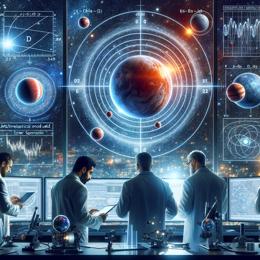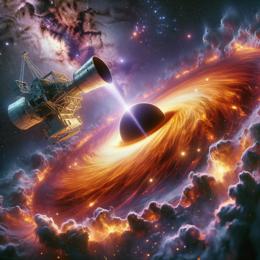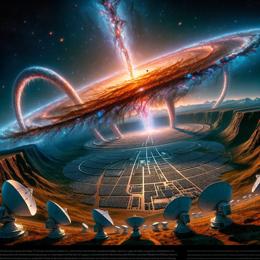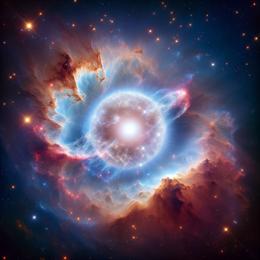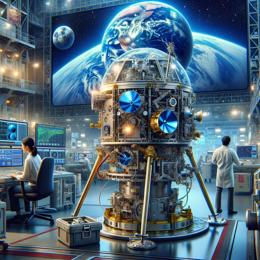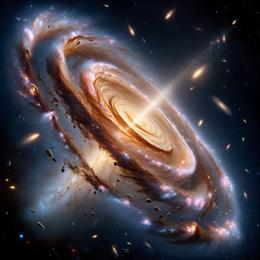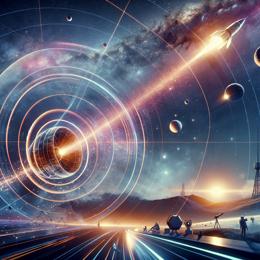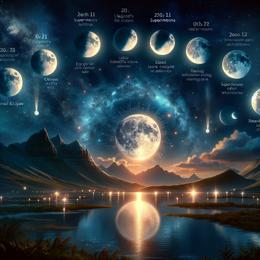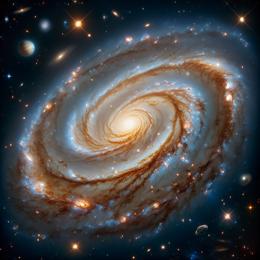Image created by AI
Hubble Telescope Captures Rare Supernova in Distant Galaxy LEDA 132905
The Hubble Space Telescope has once again astounded the astronomical community by capturing a rare and enlightening image of a supernova explosion, designated SN 2022abvt, in the distant galaxy LEDA 132905, situated in the constellation Sculptor. This event offers vital insights into the universe's expansion and aids astronomers in measuring intergalactic distances accurately.
LEDA 132905, although positioned more than 400 million light-years from Earth, presents a spiral structure visible through Hubble’s advanced imaging technology. Within this spiral galaxy, a supernova has erupted, lighting up the cosmic stage with a burst of energy visible across the vastness of space. The particular supernova, SN 2022abvt, appears as a bright pinkish-white dot near the galaxy's bright central region, distinctly noticeable on the left side of its nucleus.
This supernova belongs to the Type Ia category, which astronomers hold in high regard due to their utility in measuring cosmic distances. Type Ia supernovae occur when a white dwarf star, having exhausted its nuclear fuel, accumulates matter from a companion star until it reaches a critical mass and undergoes a thermonuclear explosion. This process emits an exceptionally bright light, consistent enough to be used as “standard candles” for distance measurements in the universe.
The discovery of SN 2022abvt was made possible by the ATLAS (Asteroid Terrestrial-impact Last Alert System), a robotic telescope system that scans the sky nightly, monitoring for changes such as those caused by incoming asteroids, variable stars, active galactic nuclei, and supernovae like SN 2022abvt. This system allows astronomers to track transient celestial events that offer profound insights into the dynamics of the universe.
The significance of capturing such a supernova explosion cannot be overstated. Each observation of a Type Ia supernova provides data that help refine our understanding of the universe's rate of expansion. This, in turn, has implications for the theories about the dark matter and dark energy that are believed to constitute the vast majority of the cosmos.
This achievement underscores the continued importance of the Hubble Space Telescope as an indispensable tool in the field of astronomy. Even as we transition to newer technologies like the James Webb Space Telescope, Hubble's ongoing contributions to our knowledge of deep space—including this glimpse into the explosive death of a star in LEDA 132905—remain invaluable.
Further study and observation of SN 2022abvt will continue, as astronomers seize this fleeting opportunity to glean as much scientific knowledge as possible from the supernova's lifecycle. The international scientific community remains attentive to any additional data transmitted by Hubble, which might unlock more secrets of the profound and enigmatic universe in which we reside.

